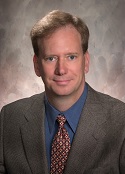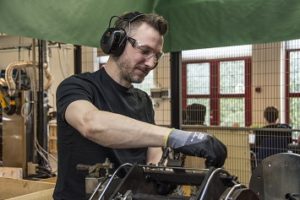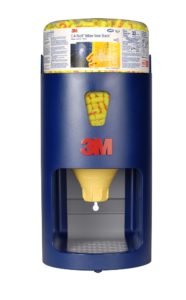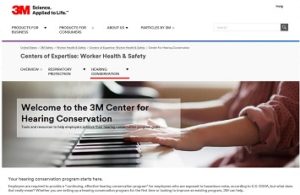At least 22 million employees will experience workplace noise at potentially damaging levels this year. According to the National Institute for Occupational Safety and Health (NIOSH), occupational hearing loss is the most common U.S. work-related illness in manufacturing. The Occupational Safety and Health Administration (OSHA) estimates that $242 million is spent on workers’ compensation for hearing loss disabilities each year.
Because of the ongoing exposure an individual may experience throughout the day, it is essential that safety managers activate a solid Hearing Conservation Program (HCP) for the jobsite.
7 Elements of Hearing Conservation
Hearing loss prevention starts with the implementation of an effective HCP, which includes seven elements based on both OSHA requirements and best practice recommendations from NIOSH. They are measure, control, protect, check, train, record, and evaluate. As we review each step, we’ll include ways safety managers can improve hearing protection on and off the clock.
Measure
OSHA requires all employees whose noise exposure equals or exceeds an A-weighted, 8-hour time-weighted average (TWA) of 85 decibels (dB) to be included in a HCP. This degree of noise exposure would be similar to standing or walking along the street during busy city traffic for 8 hours straight.
Measuring noise exposure on the job as part of an HCP can be done with either a sound level meter, dosimeter, or both. Measurements should be taken at different times to help determine the different noise levels experienced throughout a workday. Employee movement and sound instrument calibration and maintenance should also be considered in a comprehensive measurement program.
Sound measurement apps, such as the NIOSH Sound Level Meter App for iOS, can be useful for raising awareness of noise problems in the workplace. It is important to remember that only calibrated “Type 2” (or better) instruments should be used for compliance with occupational health regulations.
Control
Employers and occupational safety professionals may be able to reduce hazardous noise by addressing the source. NIOSH suggests:
- Purchasing and upgrading to low-noise tools and machinery;
- Regular maintenance of tools and equipment;
- Reducing vibration when feasible; and
- Isolating noise in a room or enclosure, or placing a barrier, such as a sound wall or window, between the noise source and the employee.
Protect
Even with the best noise control measures taken, workplace noise is sometimes inevitable. In this case, it is time to provide hearing protection devices.
There are a vast number of hearing protection solutions available to address a variety of workplace environments and conditions, including varying types of noise, industry-specific requirements, as well as different needs to hear and respond to critical sounds. Individual fit-testing of earplugs and earmuffs should be a part of an HCP to ensure each worker has the right equipment with proper fit. Safety managers should engage employees in choosing their solutions. They are the best resource when it comes to understanding if the equipment is working, comfortable, and most importantly, compatible with their job.
To help ensure employees are getting the protection they need, workplace safety managers should also know the Personal Attenuation Rating (PAR) of every employee. A PAR can be assessed with a hearing protection fit testing system, such as the 3M™ E-A-Rfit™ Dual-Ear Validation System.
Some of the following questions are among the types of issues you should consider when selecting a system for validating the fit of hearing protectors:
- Does the system address the employee’s unique needs and challenges?
- Is it science-based, providing objective and quantitative testing?
- Can it test a variety of devices?
- Does it quickly test multiple frequencies?
- And, if there are multiple employees, does it offer quick, accurate testing per employee?
This information must be provided to the worker to ensure that he or she understands his or her unique hearing protection needs. A safety manager can provide the right hearing protection, but each worker must understand how and why it must be used.
After fit, comfort, and use, accessibility must be addressed. For example, if earplug dispensers are not accessible where workers are located, they may be less likely to use them.
Check
It’s important to routinely use standardized measurement procedures to check each worker’s hearing for changes. The audiometric equipment must be calibrated and checked for wear and tear as well. Changes in hearing, as defined by regulatory agencies, require intervention. Additionally, if the currently used hearing protection product is not meeting workers’ needs, a change must be made.
Train
Once employees are tested and provided adequate hearing protection, training is essential. Worker training and motivation programs can improve the success of your hearing loss prevention efforts. While large-group training is efficient, there is good evidence that one-on-one training on proper use of hearing protectors, including individual fit-testing to measure how well the devices fit each person, can lead to a significant improvement in PAR.
Record
OSHA requires that employers keep noise exposure measurement records for at least 2 years and that they maintain records of audiometric test results the for the entire period an affected worker is employed. Employers are also required to record work-related hearing loss when hearing tests show a marked decrease in overall hearing.
Other records such as worker training, fit testing, equipment calibration and technician certification should also be kept for an extended time to document all the employer’s efforts to prevent noise-induced hearing loss.
Evaluate
As with any protection program, it’s good to do an assessment of the program itself from time to time. Is the HCP actually preventing hearing loss? Program audits can be helpful to identify the strengths and the gaps that must be filled. Committing to routine reviews and continuous improvement can enhance the effectiveness of the overall HCP.
Conclusion
Designing and delivering a comprehensive and effective HCP is a big job. Whether it is measuring noise, selecting appropriate hearing protection, fit-testing and training employees, or another HCP task, 3M can help support employers in their efforts to comply with regulations and prevent noise-induced hearing loss.
For more information, please visit the 3M Center for Hearing Conservation, a new online resource introduced by 3M Personal Safety Division.
 Laurie Wells is a board-certified audiologist and Regulatory Affairs Specialist for 3M Personal Safety Division. She received her master’s degree from University of Arizona and her clinical doctorate degree from Salus University School of Audiology. Wells is a Certified Professional Supervisor of the Audiometric Monitoring Program. She has experience in professional audiology review, audiometric database analysis, fit-testing hearing protection devices, employee/employer education, and employee noise exposure assessment for hearing conservation programs large and small. Wells is chair of the Council for Accreditation in Occupational Hearing Conservation (CAOHC) and as a Certified Course Director has taught numerous CAOHC courses, graduate audiology courses, and made frequent presentations at professional conferences. Wells is past president of the National Hearing Conservation Association (NHCA), and served on the NHCA board from 1999–2007. She has been awarded both the Michael B. Threadgill Award and the Outstanding Speaker award by the NHCA. Wells is a member of the Acoustical Society of America, American Academy of Audiology, American Industrial Hygiene Association (AIHA), American Speech-Language-Hearing Association (ASHA), and Colorado Academy of Audiology. Laurie Wells is a board-certified audiologist and Regulatory Affairs Specialist for 3M Personal Safety Division. She received her master’s degree from University of Arizona and her clinical doctorate degree from Salus University School of Audiology. Wells is a Certified Professional Supervisor of the Audiometric Monitoring Program. She has experience in professional audiology review, audiometric database analysis, fit-testing hearing protection devices, employee/employer education, and employee noise exposure assessment for hearing conservation programs large and small. Wells is chair of the Council for Accreditation in Occupational Hearing Conservation (CAOHC) and as a Certified Course Director has taught numerous CAOHC courses, graduate audiology courses, and made frequent presentations at professional conferences. Wells is past president of the National Hearing Conservation Association (NHCA), and served on the NHCA board from 1999–2007. She has been awarded both the Michael B. Threadgill Award and the Outstanding Speaker award by the NHCA. Wells is a member of the Acoustical Society of America, American Academy of Audiology, American Industrial Hygiene Association (AIHA), American Speech-Language-Hearing Association (ASHA), and Colorado Academy of Audiology.
E-mail: Laurie.Wells@mmm.com
|
 Ted Madison is a Technical Service Specialist for the 3M Personal Safety Division providing technical support, education, and training in hearing loss prevention and hearing protection. He received a master’s degree in audiology from The University of Iowa in 1984. Madison is a CAOHC-certified course director at the Midwest Center for Occupational Health and Safety at the University of Minnesota. The NHCA awarded Madison with Michael B. Threadgill Award for outstanding leadership and distinguished service in 2008 and its Outstanding Lecture Award in 2002. He is a past president of the NHCA, a certified member of ASHA, a fellow of the American Academy of Audiology (AAA), and a representative of AIHA to the American National Standards Institute (ANSI) S3 Bioacoustics committee. When time allows, Madison brings his passion for hearing loss prevention into the classroom as a Dangerous Decibels™ educator, teaching young people about the joys of hearing and encouraging them to make healthy hearing choices. Ted Madison is a Technical Service Specialist for the 3M Personal Safety Division providing technical support, education, and training in hearing loss prevention and hearing protection. He received a master’s degree in audiology from The University of Iowa in 1984. Madison is a CAOHC-certified course director at the Midwest Center for Occupational Health and Safety at the University of Minnesota. The NHCA awarded Madison with Michael B. Threadgill Award for outstanding leadership and distinguished service in 2008 and its Outstanding Lecture Award in 2002. He is a past president of the NHCA, a certified member of ASHA, a fellow of the American Academy of Audiology (AAA), and a representative of AIHA to the American National Standards Institute (ANSI) S3 Bioacoustics committee. When time allows, Madison brings his passion for hearing loss prevention into the classroom as a Dangerous Decibels™ educator, teaching young people about the joys of hearing and encouraging them to make healthy hearing choices.
E-mail: tkmadison@3M.com |



